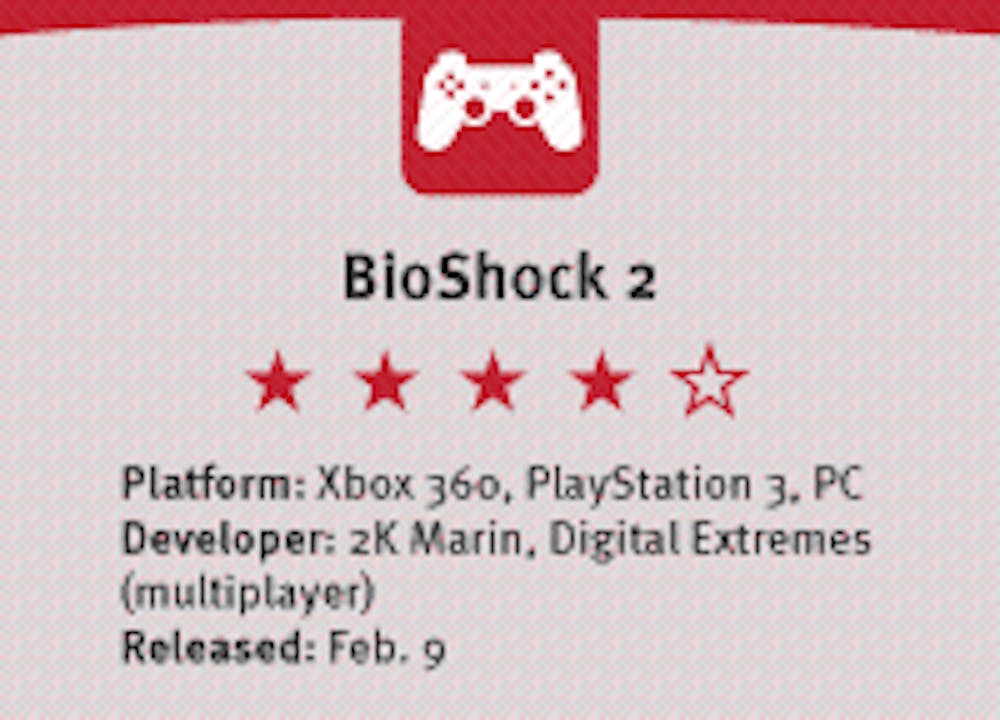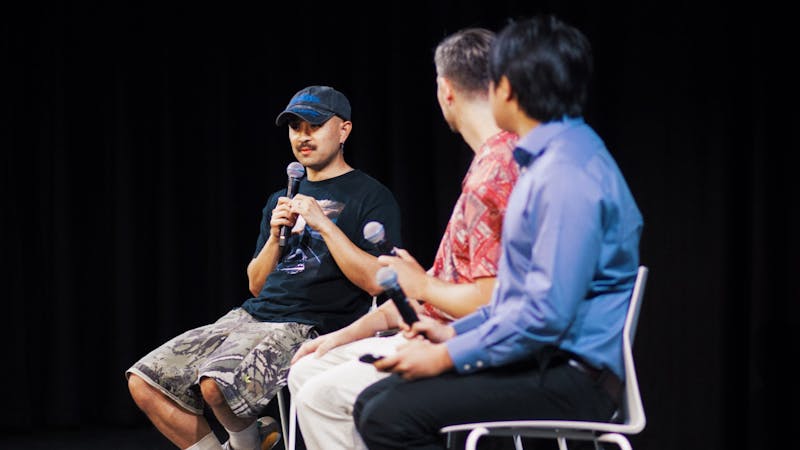Return to Rapture

Let me preface this review by saying that the original BioShock, released in 2007, is one of my favorite games. Of all time. I was completely caught up in the game's creepy art-deco atmosphere, the hostile beauty of the underwater city of Rapture and the engaging, thought-provoking and moralistic plot.So when BioShock 2 was announced less than a year later, I had every right to be skeptical. The original BioShock garnered Game of the Year awards from dozens of media outlets - how could the sequel improve upon perfection? The fact that the sequel's production was being handled by a different developer and the addition of a seemingly superfluous multiplayer mode did little to convince me that BioShock 2 wasn't just riding the coattails of its predecessor in an attempt to make some quick cash.
That being said, color me pleasantly surprised with BioShock 2. Sure, the game has its flaws, but it has taken all the best elements of its predecessor and also added some subtle gameplay changes to a thoroughly engaging plot. The result is a game that doesn't quite reach the bar set by the first BioShock, but still comes pretty damn close.
The first game is set in 1960, a year after the fall of Rapture. Bioshock 2 occurs a full eight years after the first game, but depicts the end result of events that took place in Rapture before the first game. In BioShock 2, players play as Subject Delta, one of the first Big Daddies to come off the production line, who awakens from a coma to find that his Little Sister counterpart is missing. Andrew Ryan, the brooding antagonist of the first game, has been replaced by the enigmatic Sofia Lamb, who has been preaching her collectivist message to the remaining citizens of the underwater city and gathering an army of Little Sisters.
Like the first game, the plot is revealed piecemeal through audio log recordings scattered throughout the broken city. Despite the apparent disjointedness, the material on the recordings is expertly woven into the storyline established by the first game, with Lamb's collectivist philosophy clashing against Ryan's emphasis on the individual, creating an extremely volatile situation that is ultimately responsible for the demise of Rapture.
But while the majority of BioShock 2 leans on the strength of its plot, a game still needs solid mechanics, which it delivers in spades. Tweaks over the original include the ability to use plasmids - genetic abilities that players can splice into their DNA in the game - at the same time as traditional weapons, resulting in some new and interesting uses for certain plasmids.
For example, the Telekinesis plasmid, a mostly passive ability used to pick up and throw objects in the first game, can now be used to carry objects as makeshift riot shields while the player fires a weapon.
That's just one of dozens of examples of the creativity that a game like BioShock 2 encourages with its multitude of options available to players. Melee attacks are another welcome addition for when your boomstick runs out of shells and those splicers start getting a little too close, and a reworked hacking minigame has turned the tediously boring and repetitive task from the first game into a quick, fun, reflex-oriented minigame.
A few annoyances with this game stem from graphical glitches that come dangerously close to ruining the experience. To be sure, the atmosphere and setting of BioShock 2 are an integral part of the game - it's the little touches that go a long way to help immerse the player in the world of Rapture. But while BioShock 2 uses the same graphics engine as the first game, it's disappointing that more work didn't go into optimizing it for the sequel.
Granted, the graphics look just as pretty as they did in the first game, be it the water droplets and condensation that collect on Subject Delta's suit visor, or the sound that the water makes as it drums on his metal helmet. But BioShock 2 still suffers from the same dips in frame rates, textures that take a while to load in and enemies getting stuck in walls, not to mention the helmet visor HUD disappearing between levels. These small things aren't gamebreakers by any stretch, but it's a shame to see that 2K Marin didn't spend a little more time polishing and tightening the game before it hit shelves. Inconsistencies like these threaten the overall immersive experience that makes BioShock 2 so engaging.
Also worth noting is the game's multiplayer component, created separately from the single-player experience by developer Digital Extremes - the same guys who brought us the Unreal Tournament series on PC. It won't topple Modern Warfare 2 off the top of the Xbox LIVE charts by any stretch, but it's still a fun addition to the game that is actually incorporated into the BioShock storyline. Players assume the role of a participant in Sinclair Solutions' consumer reward program in 1959, right as civil war grips the city of Rapture. With seven different gameplay modes, the fast and frenetic multiplayer offers something for everyone. As a player progresses through the ranks, they are awarded unlocks and upgrades to augment their loadout they carry into each match.
Ultimately, BioShock 2's return to Rapture is highly enjoyable, despite some nagging graphical glitches and the initial gnawing feeling of déj? vu for veterans of the first game. But even with these snags, BioShock 2 shines as a worthy sequel to one of the most critically acclaimed games in the past few years by continuing and expanding the BioShock storyline and universe in a creative new direction. Grab your research camera - it's time to revisit Rapture.
More from The Rice Thresher

Worth the wait: Andrew Thomas Huang practices patience
Andrew Thomas Huang says that patience is essential to being an artist. His proof? A film that has spent a decade in production, a career shaped by years in the music industry and a lifelong commitment to exploring queer identity and environmental themes — the kinds of stories, he said, that take time to tell right.

Andrew Thomas Huang puts visuals and identity to song
Houston is welcoming the Grammy-nominated figure behind the music videos of Björk and FKA twigs on June 27.

Live it up this summer with these Houston shows
Staying in Houston this summer and wondering how to make the most of your time? Fortunately, you're in luck, there's no shortage of amazing shows and performances happening around the city. From live music to ballet and everything in between, here are some events coming up this month and next!

Please note All comments are eligible for publication by The Rice Thresher.